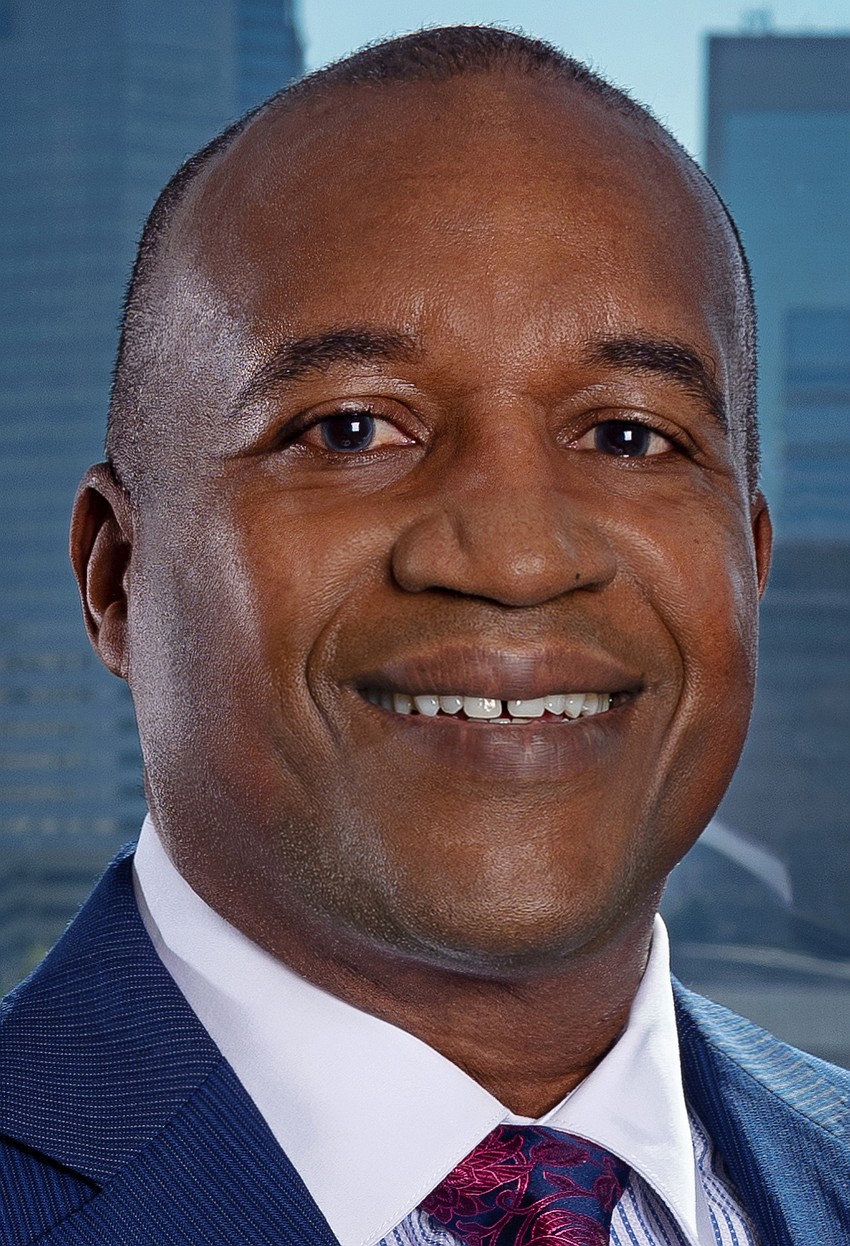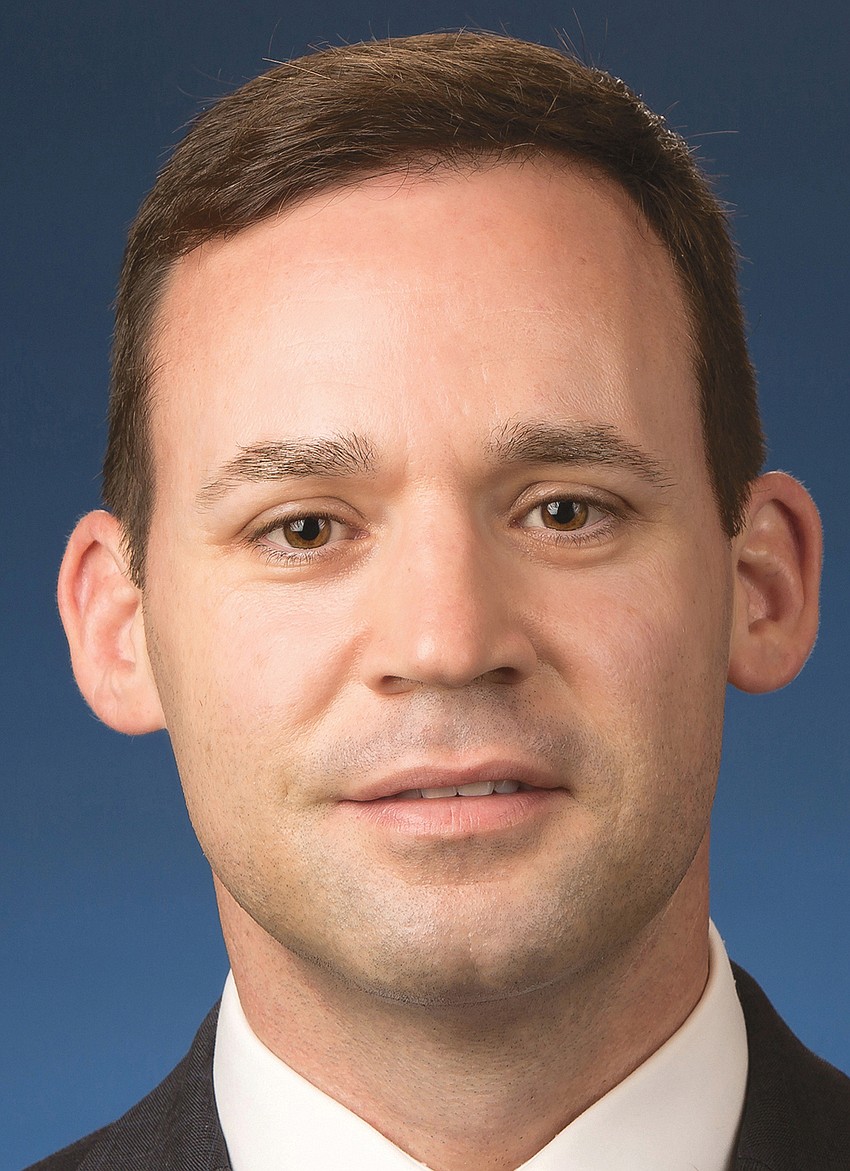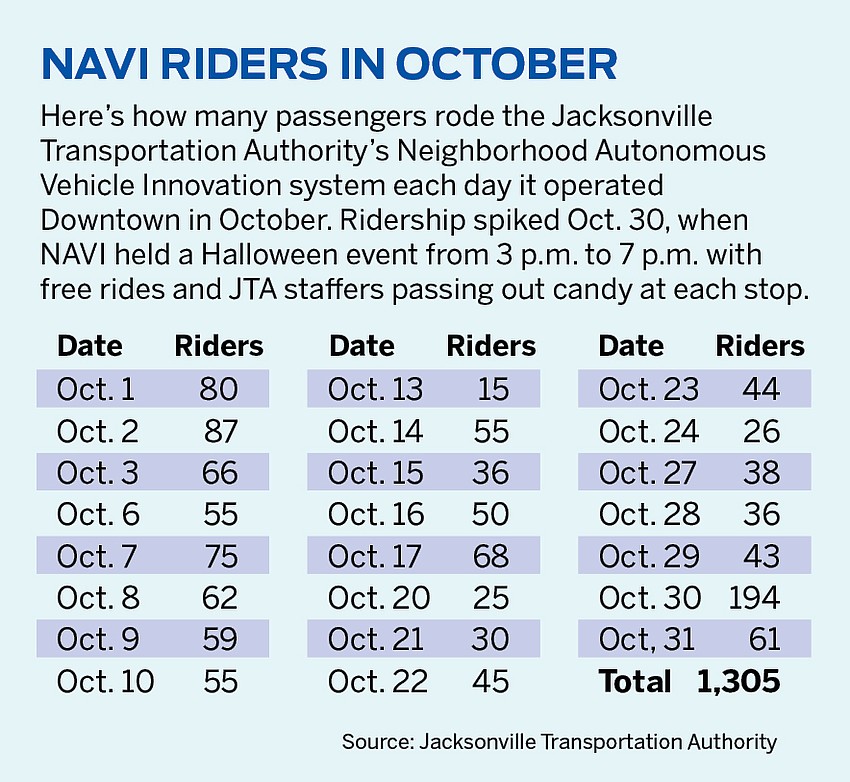
A Jacksonville City Council special committee questioned Jacksonville Transportation Authority CEO Nat Ford for nearly 90 minutes Nov. 4 about what the committee chair described as “disappointing” ridership for the JTA’s automated shuttle system.

The Duval DOGE Special Committee, chaired by Council member Ron Salem, pressed Ford on why the $65 million Neighborhood Autonomous Vehicle Innovation system wasn’t meeting projections, whether it was an effective transportation solution versus a pricey gamble on unproven technology, whether JTA had a backup plan in case it failed to be fully implemented, and other issues.
According to information provided by JTA to committee member Rory Diamond, the NAVI system drew about 6,500 riders from its rollout in June through October. That’s an average of 76 passengers per day, less than a third of the 280 per day that JTA projected by 2035.

Ford said the system was designed to meet the community’s long-term mobility needs and that judging it now was “not an indication of the actual success this program will have in five 10, 15 years.”
He said ridership projections were based on Downtown redevelopment that has not occurred as quickly as expected.
Ford said JTA remained confident that ridership would meet projections when the Four Seasons Hotel and Residences, the planned new Museum of Science and History, the University of Florida graduate campus in LaVilla and other development is completed.
“Those developments are going to lead to the ridership that we were projecting,” he said.
‘Pull the plug’
Diamond wasn’t convinced with Ford’s assessment.
He urged the DOGE committee, which is modeled after the government cost-cutting group established by President Donald Trump’s administration, to continue examining JTA’s autonomous vehicle project.
“I would like to pull the plug,” Diamond said, adding that the system involved “too much money, too big of a risk.”

Member Jimmy Peluso, whose District 5 includes the 3.5-mile Bay Street Innovation Corridor where the NAVI shuttles operate, said he wanted JTA to explore alternatives such as streetcars and light-rail rather than focusing exclusively on developing the automated system.
Peluso said such communities as Charlotte, North Carolina; Kansas City, Missouri; Milwaukee; and Oklahoma City had created successful rail-based systems serving their downtowns and beyond.
“I want us as policymakers to see what options are available,” he said.
Ford said light rail wasn’t a viable option for Jacksonville due to its low population density, which would equate to relatively low ridership. He said the mode worked in Charlotte because its population is more dense.
Wrong, Peluso said. He said that while Jacksonville’s density is lower if measured throughout the entire county, the density is adequate within the Interstate 295 Beltway and the Beaches to support rail.
Revenue is ‘chump change’
Salem, who said NAVI ridership had been “a disappointment to all of us to some extent,” asked Ford if the program could be paused while Downtown development proceeded.
Ford said doing so would risk the loss of federal and state funding for the program, which totals $25.5 million.
The Bay Street Innovation Corridor is the first phase of a three-phase project to create what JTA calls the Ultimate Urban Circulator, or U2C. Phase Two would adapt the Skyway overhead tram to allow automated vehicles to access it via ramps to surface streets, and the final phase would expand the system to serve Brooklyn, Riverside, San Marco, Springfield and other neighborhoods.
The total cost of the system could exceed $400 million, according to published reports.

Diamond, arguing that other automated vehicle technology could make NAVI obsolete.
DOGE committee member Raul Arias expressed support for the system as a long-term solution but said current ridership numbers do not justify charging a passenger fee. The shuttles were free until Oct. 1, when JTA instituted a $1.75 fee per ride.
Using a number he projected based on current monthly ridership, Arias said, “$25,000 a year, that’s chump change. Give the riders a free fare. You’re not going to lose (significant) money over this.”
Ford said the U2C had generated benefits beyond providing transportation by establishing Jacksonville as a leader in development of automated mass transit. German autonomous vehicle manufacturer Holon signed an agreement to build a $100 million manufacturing facility in Jacksonville.
In April, the JTA board approved a plan to reserve 100 Holon vehicles, including 14 at $409,000 each.
Joe Inderhees, deputy chief of staff for Mayor Donna Deegan, said in response to a question from Diamond that Deegan supports the U2C based partly on its “ripple” economic effects.
“I think the mayor is in support of projects that draw that kind of investment,” he said.

“Ambassador program” or a way to inflate ridership?
The DOGE meeting came one day after Action News Jax reported that JTA distributed an internal email to staff in August urging them to ride the NAVI shuttles during their working hours.
According to the news report, the email notified employees of a calendar for scheduling rides and encouraged them to “sign up and ride (the NAVI) tomorrow and beyond” because “we are in dire need of riders.”
Responding to questions from the committee, Ford said the message involved JTA’s “ambassador program” for NAVI, in which salaried staff members were urged to ride the vehicles to introduce the U2C to riders and answer their questions.
He said the approach was common in transportation and other fields, adding he had employed it during his previous roles in transportation systems in Atlanta, San Francisco and elsewhere.
“You put them in the field, boots on the ground, to help our customers understand a new system,” he said.
Action News Jax reported that more than 50 employees, consultants and interns signed up to ride at least one 2½-hour shift, with some scheduling more than a dozen. The rides equated to 840 hours spent on the clock by employees of JTA, which is funded by tax dollars and rider fares.